Winter Weather in New Orleans: A Mild and Pleasant Season

New Orleans, renowned for its eclectic music, exquisite cuisine, and cultural diversity, offers a unique experience during the winter months. Unlike the biting cold that characterizes many parts of the United States during this season, winter weather in New Orleans is remarkably mild and inviting. This pleasant climate makes it an excellent time for visitors to explore the city in comfort. The Charm of Mild Winters in New Orleans Winter in New Orleans is not just about tolerable temperatures; it’s about experiencing the city in a whole new light. With average temperatures ranging from the mid-40s to the mid-60s Fahrenheit, visitors can enjoy outdoor activities without the need for heavy winter clothing. This season brings a quiet beauty to the city, as the pace slows and the streets become less crowded. Benefits of Visiting During Winter The advantages of visiting New Orleans in winter are many. The city, known for its vibrant festivals and events, offers a different kind of charm during the cooler months: Outdoor Activities Perfect for Mild Winters The gentle winter weather in New Orleans makes it an ideal time for enjoying the outdoors. Whether it’s strolling through historic districts or participating in active adventures, there’s something for everyone. Exploring Parks and Gardens New Orleans boasts several beautifully maintained parks that are particularly enjoyable in the mild winter weather. City Park, one of the largest urban parks in the country, features extensive walking paths, picturesque ponds, and ancient oak trees that are striking in the cooler air. The New Orleans Botanical Gardens are also a must-see, with vibrant floral displays that contrast beautifully against the subdued winter palette. Experiencing City Tours Taking a walking tour of the French Quarter now becomes a leisurely affair, with cooler temperatures making the experience all the more enjoyable. Architectural tours or haunted history tours also gain an added layer of allure under the crisp winter sky. For those who prefer a bit more speed, bike tours along the levee paths offer breathtaking views of the Mississippi River, without the sweat and exhaustion typical of summer tours. Swamp Tours in the Winter Season Swamp tours are a highlight of visiting New Orleans and are particularly magical during the winter. The ecosystems of Louisiana’s bayous are robust and full of life year-round, and winter brings its own unique flair to the scenery. What to Expect on a Swamp Tour Swamp tours in winter are an exceptional experience, offering visitors the chance to see the bayous in a less dense, more serene state. The wildlife is different, but no less abundant. Birds migrating south for the winter populate the trees, and other animals native to the region are often more visible in the sparse landscape. Tips for Swamp Tour Enthusiasts To make the most of a winter swamp tour, it’s important to be well-prepared: Experience New Orleans’ mystical swamps during winter, when mild temperatures and fewer mosquitoes create perfect touring conditions. Just as local roofing companies in Florida prepare homes for harsh weather, experienced swamp tour guides navigate through cypress-lined waterways, ensuring visitors safely witness alligators, birds, and centuries-old trees in their natural habitat. Visiting New Orleans during the winter months offers a blend of mild weather, reduced costs, and the unique cultural festivities of the holiday season. This time of year provides a different perspective on the city’s charm and vibrancy, from leisurely exploring its historical streets to enjoying the natural beauty of its surrounding bayous. Whether you’re looking to indulge in the local cuisine, partake in festive activities, or simply wander and discover, winter weather in New Orleans creates a perfect backdrop for an unforgettable experience.
Enjoy Winter Bird Watching in New Orleans
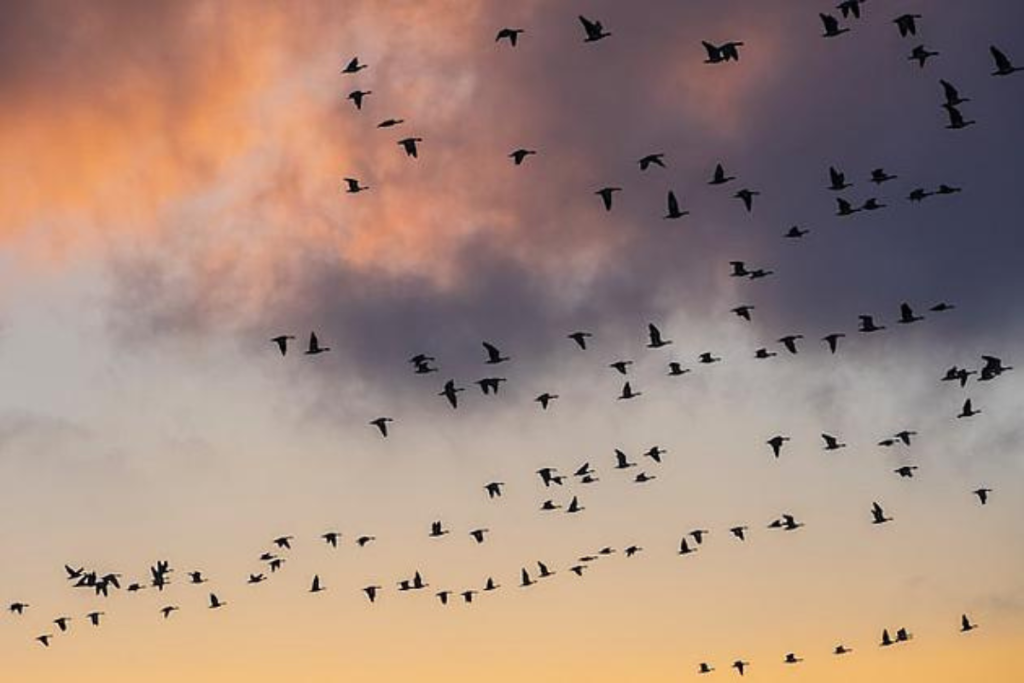
Winter bird watching in New Orleans offers a unique and enchanting experience for both avid birders and casual nature enthusiasts. As the city’s vibrant atmosphere takes on a quieter charm during the colder months, the surrounding wetlands and swamps become a haven for a diverse array of bird species. This article delves into the hidden delight of winter bird watching in New Orleans and highlights how swamp tours provide the perfect opportunity to explore this natural wonder. The Magic of Winter Migration New Orleans sits along the Mississippi Flyway, one of North America’s major migratory routes. During winter, countless birds migrate south to escape the harsh northern climates, making winter bird watching in New Orleans particularly rewarding. Species such as the American White Pelican, Great Blue Heron, and various ducks and geese can be spotted in abundance. The city’s mild winter temperatures create an ideal environment for both the birds and those keen to observe them. Top Spots for Bird Watching While there are numerous parks and green spaces within the city, the true treasures for winter bird watching in New Orleans lie within the swamps and wetlands. Areas like the Barataria and The National Wildlife Refuge offer pristine habitats where birds thrive undisturbed. These locations are accessible to visitors through guided swamp tours, which provide not only transportation but also expert knowledge about the local ecosystem. Swamp Tours: An Immersive Experience Embarking on a swamp tour is an immersive way to enjoy winter bird watching in New Orleans. These tours take you deep into the heart of the swamps, where you can witness birds in their natural habitats. Knowledgeable guides lead the way, pointing out various species and sharing fascinating insights about their behaviors and migration patterns. Swamp tours often use flat-bottomed boats that glide quietly through the water, allowing you to get closer to the birds without disturbing them. What to Expect on a Swamp Tour On a typical swamp tour during the winter months, you might see: Beyond birds, swamp tours often provide sightings of other wildlife, such as alligators basking in the sun, turtles, and even the occasional otter. The lush vegetation and serene waters make for picturesque scenery, enhancing the overall experience of winter bird watching in New Orleans. Tips for a Successful Bird Watching Trip The Benefits of Choosing Swamp Tours By opting for a swamp tour, you support local businesses dedicated to preserving the natural environment. These tours are conducted responsibly, with an emphasis on conservation and education. They provide safe access to areas that might be difficult to reach on your own, making winter bird watching in New Orleans both convenient and enriching. Conclusion Winter bird watching in New Orleans is a hidden delight that combines the serenity of nature with the thrill of wildlife observation. Swamp tours offer the perfect gateway to this experience, allowing you to immerse yourself in the rich biodiversity of the region’s wetlands. Whether you’re a seasoned birder or a curious traveler, exploring the swamps during winter provides unforgettable memories and a deeper appreciation for New Orleans’ natural treasures. Discover the magic of winter bird watching in New Orleans on your next visit. Book a swamp tour and embark on an adventure that showcases the city’s wild side, far beyond the hustle and bustle of the French Quarter.
5 Reasons a Swamp Tour is the Best Way to Experience New Orleans
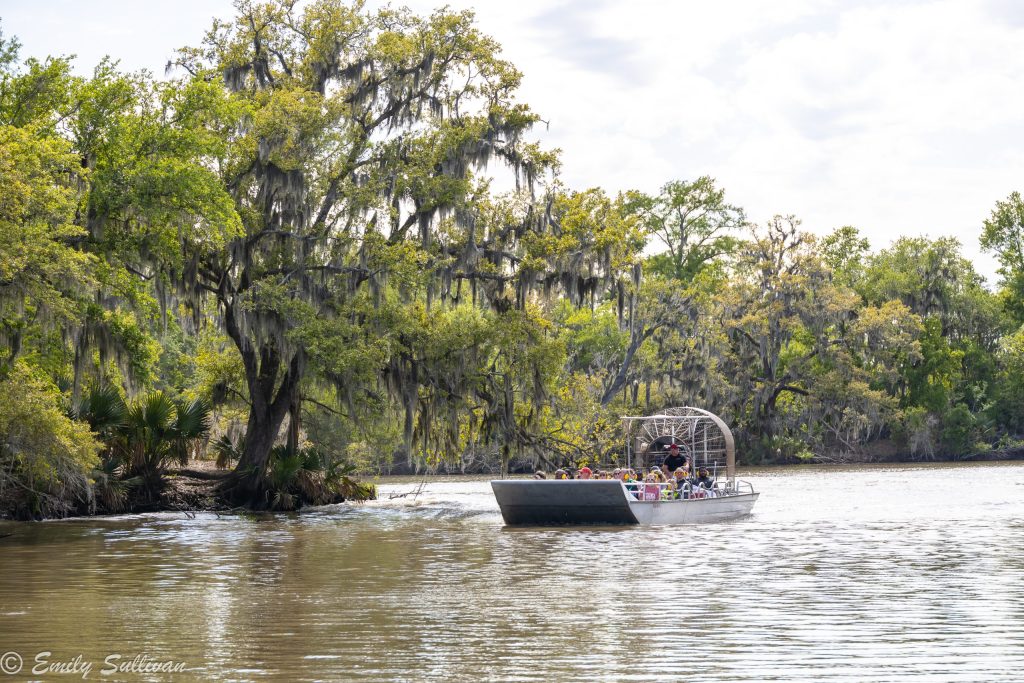
New Orleans offers a world of history, culture, and cuisine, but few experiences rival the adventure of a swamp tour. Far from the bustling French Quarter, the bayou opens a gateway to the untamed beauty of Louisiana. Whether you’re seeking thrills or a peaceful escape, a swamp tour provides an unforgettable perspective of the region. Here are five reasons why this adventure is a must when visiting New Orleans. 1. Encounter Wildlife Like Never Before One of the biggest draws of a swamp tour is the chance to see wildlife in its natural habitat. Alligators basking in the sun, herons gliding across the water, and turtles lazily drifting by—it’s a wildlife lover’s dream. The Louisiana swamps are home to a wide range of animals, and the tours are designed to give visitors a close-up look. Unlike zoos or nature reserves, the bayou offers an authentic view of creatures living as they have for centuries. With experienced guides who know the swamps inside and out, you’ll spot the animals and learn about their behaviors, habitat, and role in the local ecosystem. It’s more than a tour—it’s an education in the wild heart of Louisiana. 2. Experience the Thrill of Airboat Rides For those looking for a little more excitement, the airboat ride is a key feature of many swamp tours. These high-speed vessels skim across shallow waters and navigate tight turns with ease, creating an exhilarating experience. Airboats allow you to cover more ground (or water, rather) than traditional boats, taking you deeper into the swamp where the larger wildlife roam. But it’s not all about the speed. Airboat tours offer a blend of thrill and tranquility, giving you moments of quiet as you drift through secluded areas before roaring back to life. The contrast between the high-energy ride and the peaceful nature of the swamp makes for a unique adventure. 3. Learn the Fascinating History of the Bayou The Louisiana swamps are steeped in history, and a guided tour offers more than just scenic views. The bayou has been home to indigenous peoples for thousands of years, and later, to French and Spanish settlers. Over the centuries, the swamp has played a vital role in the culture and economy of the region. Tour guides often share captivating stories of the past, from the bayou’s role in trade routes to the local folklore of pirates and hidden treasures. You’ll leave with a deeper understanding of how the swamp shaped the lives of those who lived here and how it continues to influence the area today. It’s a rich cultural experience wrapped in an adventure. 4. Escape the Bustle of the City While New Orleans is full of life and energy, the constant buzz of the city can be overwhelming. A swamp tour offers a peaceful escape. As soon as you enter the quiet waters of the bayou, the world slows down. The trees draped in Spanish moss, the sounds of birds calling, and the gentle sway of the boat—all create a serene atmosphere. The contrast between the city’s noise and the swamp’s tranquility makes this tour an ideal break from sightseeing. You’ll feel miles away from the crowds, even though the swamps are just a short drive from downtown New Orleans. It’s a perfect way to recharge while still experiencing something extraordinary. 5. A Unique Perspective on Louisiana’s Ecosystem The Louisiana swamps aren’t just home to alligators and birds—they’re a vital part of the state’s ecosystem. Swamp tours give visitors an up-close look at the delicate balance of this environment. You’ll learn about the plants and waterways that make up the bayou, as well as the challenges it faces from environmental threats like erosion and hurricanes. By the end of the tour, you’ll have a greater appreciation for the bayou’s role in protecting the coast and its importance to the local community. It’s an eye-opening experience that showcases the true beauty of Louisiana’s wilderness. A Swamp Tour is Unforgettable A New Orleans swamp tour is more than just an excursion—it’s an immersion into a world few get to see. From the thrill of airboat rides to the peaceful moments in nature, from the fascinating wildlife to the rich history of the region, every aspect of the tour offers something unique. When you visit New Orleans, don’t just explore the city’s streets—venture into the bayou for an experience that will stay with you long after your trip ends.
Step Into the World of The Princess and the Frog in New Orleans

If you’ve ever dreamed of stepping into the world of The Princess and the Frog, New Orleans offers the perfect setting. From the jazz-filled streets to the serene bayous, you can relive the magic and charm of this beloved tale. Here’s how you can embark on a fairytale adventure in Louisiana. Discover New Orleans, the Heart of the Story New Orleans is the heartbeat of The Princess and the Frog. Begin your journey by wandering through the lively French Quarter. The streets are alive with music, art, and food, capturing the essence of the movie. Visit iconic spots like Jackson Square and the St. Louis Cathedral, where the blend of history and culture transports you straight into the film. Enjoy a beignet at Café du Monde, and it’ll feel like Tiana is right beside you. As you stroll through the streets, don’t miss the chance to visit the many street performers playing jazz, just like in the film. You can also take a ride on a streetcar down St. Charles Avenue to see some of the city’s historic homes. The slow-moving cars will give you time to take in the beauty and atmosphere, just like the scenes in The Princess and the Frog. Cruise the Bayous and Swamps One of the most magical parts of The Princess and the Frog is the journey through the bayous. Louisiana’s swamps and wetlands offer an unforgettable experience. Take a guided boat tour to explore the mysterious and beautiful scenery. You’ll feel like you’ve been transported to the scenes where Tiana and Naveen sail through the waters, meeting colorful characters along the way. The cypress trees, Spanish moss, and wildlife make the bayous a must-see for film fans. If you’re lucky, you might even spot some of the creatures that inspired the characters from the movie. From friendly alligators like Louis to the chorus of frogs that set the scene, these wildlife encounters bring The Princess and the Frog to life. For an even more immersive experience, some tours offer evening or night-time rides, where the swamp comes alive with sounds, just as it does in the film’s enchanting scenes. Savor the Flavors of Louisiana Tiana’s dream of owning a restaurant comes alive through Louisiana’s food. From gumbo to jambalaya, the rich flavors of Creole and Cajun cuisine will have you reliving The Princess and the Frog with every bite. Head to local favorites like Commander’s Palace or try a neighborhood food spot for an authentic experience. You can even attend a cooking class to learn how to make Tiana’s famous gumbo yourself! Many restaurants in Louisiana take pride in recreating the dishes that Tiana herself might have served. Whether you’re enjoying a crawfish boil or savoring the sweetness of a pecan pie, the flavors will transport you straight to Tiana’s kitchen. For foodies, this is the ultimate way to immerse yourself in The Princess and the Frog. Feel the Jazz in the Air Music is a central theme in The Princess and the Frog, and no place celebrates jazz quite like New Orleans. Visit famous music clubs like Preservation Hall, or just wander the streets and let the sounds of live jazz guide you. You’ll find musicians playing on nearly every corner, capturing the soul of the film and the city. As you listen, you’ll feel the rhythm of The Princess and the Frog all around you. Jazz performances can be found in both the famous venues and on smaller, hidden corners of the city. Local festivals and parades are also opportunities to hear the music that brings the movie’s soundtrack to life. If you’re in town during Mardi Gras season, the entire city becomes one big celebration, with brass bands and floats that will make you feel like you’re part of The Princess and the Frog. Step into History and Culture Part of The Princess and the Frog’s magic is its deep connection to the history and culture of Louisiana. Visit the Backstreet Cultural Museum, where you can explore the rich heritage of African American culture, which deeply influenced the film. You can also stop by the New Orleans African American Museum to learn more about the city’s vibrant history. These places will help you understand the cultural richness that inspired the movie. Take a Voodoo Tour One of the film’s more mysterious aspects is the character of Dr. Facilier, inspired by New Orleans’ voodoo culture. Voodoo holds a unique place in Louisiana’s history, and you can dive deeper into it with a guided tour. Visit historical voodoo shops and learn the truth behind the legends. It adds a thrilling layer to your Princess and the Frog experience, making the magic of the movie feel even more real. You can also visit the tomb of Marie Laveau, one of New Orleans’ most famous voodoo practitioners, or stop by the Voodoo Museum to understand how these beliefs shaped the culture portrayed in The Princess and the Frog. Plan Your Stay at a Southern Mansion To fully relive The Princess and the Frog, why not stay in a classic Southern mansion? Louisiana is full of historic plantations and bed-and-breakfasts that feel like they belong in the film. You can enjoy the old-world charm of these grand homes, complete with wraparound porches and lush gardens, just like Tiana’s dream restaurant. Conclusion Reliving The Princess and the Frog in Louisiana is a magical experience that brings the movie to life. From the streets of New Orleans to the peaceful bayous, you’ll find the soul of the film everywhere you go. So pack your bags, and get ready to step into Tiana’s world. The magic of The Princess and the Frog is waiting for you in Louisiana.
10 Reasons to Plan a Babymoon in New Orleans
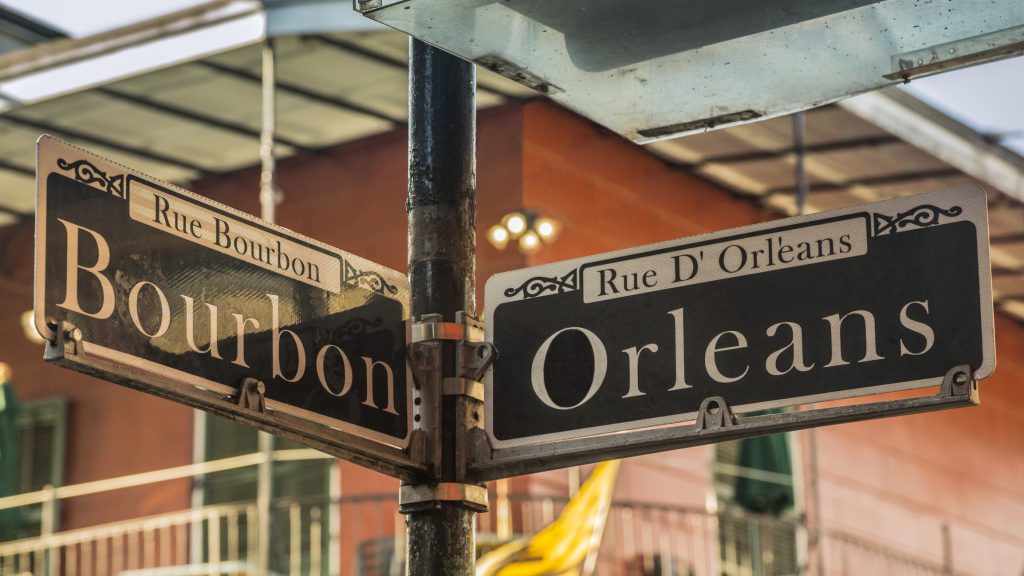
A babymoon is a perfect chance to escape, relax, and reconnect before your baby arrives. If you’re looking for a destination that combines culture, romance, and excitement, look no further than New Orleans. Planning a NOLA trip for your babymoon offers everything you need for an unforgettable pre-baby vacation. With its unique blend of vibrant music, mouth-watering cuisine, and Southern hospitality, New Orleans stands out as the perfect spot. Here’s why planning a babymoon in New Orleans should be at the top of your list. 1. Romantic French Quarter Vibes One of the best reasons to plan a babymoon in New Orleans is the city’s romantic atmosphere. The French Quarter is the heart of New Orleans, and strolling its historic streets is like stepping into another era. Picture yourself hand-in-hand with your partner, exploring charming boutiques, iconic restaurants, and quiet courtyards. Visit Jackson Square, where street performers entertain, and artists display their work. Nearby, you’ll find peaceful spots along the Mississippi River, ideal for watching the sunset. 2. Unforgettable Food Experiences A babymoon in New Orleans guarantees that you’ll satisfy every craving. Whether it’s sweet beignets from Café du Monde or savory gumbo at a local eatery, New Orleans is a food lover’s paradise. Creole and Cajun cuisines offer a mix of rich flavors and comforting dishes. Don’t miss the chance to try po’boys, jambalaya, or crawfish étouffée while dining in intimate settings. New Orleans has plenty of restaurants that cater to dietary needs, so you’ll find delicious options for every taste. 3. Immerse Yourself in Live Music Music is the heartbeat of New Orleans, and your babymoon trip won’t be complete without experiencing its world-class live music scene. Take in smooth jazz or soul at one of the city’s iconic venues, like Preservation Hall or along Frenchmen Street. The intimate, laid-back settings make it perfect for expectant parents to unwind and enjoy the moment together. This is one of the top reasons to plan a babymoon in New Orleans—it adds a memorable soundtrack to your trip. 4. Relax with Luxury and Pampering Planning a NOLA trip for your babymoon means indulging in some well-deserved pampering. The city offers many luxurious hotels and spas that cater to pregnant couples. Consider booking a prenatal massage at The Ritz-Carlton, New Orleans, or the Windsor Court Hotel’s spa for a rejuvenating experience. Many accommodations in New Orleans specialize in creating relaxing atmospheres, offering cozy, elegant rooms where you can unwind. When you plan your babymoon in New Orleans, you’re planning a trip full of relaxation. 5. Explore the City’s Culture and History New Orleans is a city rich in history and culture, making it an exciting destination for your babymoon. From museums to guided tours, there’s plenty to explore. The New Orleans Museum of Art is a fantastic place to admire impressive collections of local and international works. You can also take a walking tour of the French Quarter or Garden District to learn about the city’s unique architecture and history. This cultural immersion adds depth and discovery to your babymoon experience. 6. Adventurous Swamp Tours One of the more unique reasons to plan a babymoon in New Orleans is the opportunity for adventure in its surrounding natural beauty. A swamp tour is a must-do when visiting. Head just outside the city for a guided boat tour of the Louisiana Bayou, where you can encounter alligators, birds, and the region’s distinct ecosystem. These tours offer a peaceful way to experience the wilderness, all while staying safe and comfortable for expectant mothers. Swamp tours are ideal for adding a touch of adventure to your babymoon in New Orleans. 7. Romantic Riverboat Cruises No babymoon in New Orleans is complete without a serene riverboat cruise on the Mississippi. The Steamboat Natchez offers brunch and dinner cruises that give you a chance to relax and take in stunning views of the city from the water. Savor delicious food and live jazz as you drift along the river, creating a perfect romantic moment for you and your partner to enjoy before your new adventure in parenthood begins. 8. Tranquil Garden District Walks When planning a babymoon in New Orleans, you’ll want time for peaceful moments. The Garden District offers just that, with its tree-lined streets and grand, historic homes. Spend a quiet afternoon wandering through this charming area, where you can stop for a coffee or sit in a park surrounded by lush greenery. The tranquility and beauty of the Garden District make it an ideal spot to enjoy a slower pace while you reflect on the exciting changes ahead. 9. Unique Shopping Opportunities One of the great reasons to plan a babymoon in New Orleans is the unique shopping. From baby boutiques to local artisan shops, the city is full of special finds. Explore Magazine Street or the French Market to discover one-of-a-kind gifts and souvenirs. You’ll find charming pieces for your nursery or meaningful keepsakes to remember your babymoon trip to New Orleans. 10. Year-Round Mild Weather No matter when your due date is, New Orleans offers pleasant weather throughout the year. The mild subtropical climate makes it easy to plan outdoor activities like park picnics, strolls through City Park, or relaxing by the river. If you plan a babymoon in New Orleans during the fall or spring, you’ll enjoy ideal weather for exploring the city without it being too hot or too cold. Your Babymoon Awaits in New Orleans There’s no better place to celebrate the upcoming arrival of your baby than in New Orleans. From the delicious food to the rich culture and music scene, New Orleans offers a blend of excitement and relaxation. When you plan a NOLA trip for your babymoon, you’ll create lasting memories with your partner before your life changes in beautiful ways. Whether you’re looking to indulge in luxury, enjoy a unique swamp tour, or simply stroll hand-in-hand through romantic streets, a babymoon in New Orleans has it all.
8 Things to Do Before and After Your Taylor Swift Concert in NOLA

Taylor Swift is about to light up New Orleans with her unforgettable hits, and you’re ready for a night that will go down in history. But why limit the fun to just the concert? In a city like New Orleans, the adventure begins long before Taylor takes the stage and doesn’t stop when the last note fades. From exploring the spooky corners of the French Quarter to dancing in the glow of Bourbon Street, here’s your ultimate guide to making the most of your Taylor Swift concert experience—before, during, and after. Pre-Concert Adventures 1. Eat Like a Local—New Orleans StyleStart your concert day right with a true taste of NOLA. Grab a massive po’boy from Parkway Bakery, or dig into the city’s famous gumbo at Dooky Chase’s. Want a sweet pre-show treat? Head to Café Beignet and drown yourself in powdered sugar. Local food fuels your concert vibes and gives you a taste of the city’s legendary flavors. 2. Go Wild on a Swamp TourFeeling adventurous before you head into a night of Taylor Swift magic? Book a swamp tour! Glide through the mysterious bayous of Louisiana, spotting alligators, turtles, and incredible birdlife. It’s a thrilling way to kick off your day, and the natural beauty of the swamps will put you in the right headspace for an epic night of singing and dancing. 3. Get Spooked on a Ghost TourIf you’re looking for something a little darker, New Orleans is famous for its haunted history. Take a ghost tour through the French Quarter and learn about the city’s haunted mansions and the spirits said to still linger. These tours are packed with eerie tales and historical gems, setting a perfect tone for an unforgettable concert experience. 4. Capture the Moment at the SuperdomeBefore the crowd arrives, make your way to Caesars Superdome for some pre-show photos. The Superdome is massive and iconic—perfect for capturing that killer concert-day selfie. Plus, the buzz around the venue as fans gather will get you even more hyped for what’s to come. 5. Dress to Impress and Stay ComfortableLet’s talk concert fashion. Swifties know how to show up, so bring your best look that nods to your favorite Taylor era—whether it’s the dreamy vibes of “Folklore” or the sparkly fun of “1989.” But remember, New Orleans can be hot and unpredictable, so keep your outfit comfy and bring a jacket or poncho for rain. After the Concert: Keep the Party Going 1. Head to Bourbon Street for the Ultimate After-PartyWhen the concert ends, the fun in NOLA is just getting started. Make your way to Bourbon Street, where the party never stops. Bars are alive with music, lights, and dancing, so dive in and keep the celebration going. Grab a drink, hit the dance floor, and soak up the legendary New Orleans nightlife. Whether it’s jazz, pop, or brass bands, Bourbon Street has something for everyone. 2. Late-Night Beignets at Café Du MondeWhat’s better than a sugar rush after a concert? Head to Café Du Monde, open 24/7, for some late-night beignets. These fluffy, powdered sugar-covered treats are the perfect way to cap off your night. There’s nothing quite like munching on hot beignets as you relive the best moments of the concert. 3. Relax at a Rooftop BarNot in the mood for Bourbon Street’s wildness? Head to a rooftop bar like Hot Tin or Above the Grid for a more laid-back vibe. Enjoy a cocktail while overlooking the city skyline and let the night wind down at your own pace. You’ll still be buzzing from the concert, but this is the chill way to savor every moment. Make Your Taylor Swift Concert in NOLA UnforgettableNew Orleans and Taylor Swift? That’s a combo you don’t want to miss. From swamp tours to Bourbon Street and beyond, this city offers a whirlwind of fun before and after the show. Follow this guide, and your concert experience will be as legendary as the artist herself. NOLA knows how to party, and Taylor Swift knows how to put on a show—get ready for an epic night!
Why Visit New Orleans in the Winter: A Season of Unique Charm and Festivities

Why visit New Orleans in the winter? This question captivates many, as the city transforms into a hub of unique charm and festivities unlike any other season. From the mild weather to vibrant celebrations and unique cultural experiences, winter in New Orleans is truly magical. Experience the Mild Winter Weather One compelling reason to visit New Orleans in the winter is the city’s exceptionally mild weather. Far removed from the sweltering heat typical of summer, winter here offers temperatures ranging from the mid-40s to the 60s Fahrenheit. This pleasant climate is ideal for exploring the rich tapestry of outdoor markets, strolling through historical neighborhoods, and enjoying the natural beauty of parks like the City Park, all without the oppressive heat. Enjoy the Festive Atmosphere The festive season kicks off with Christmas and continues through the lively celebrations of Mardi Gras at the onset of spring. The city comes alive with decorations, and there is a palpable sense of joy and community spirit in the air. Engage in traditional caroling in Jackson Square, marvel at the holiday home tours in the Garden District, and don’t miss the spectacular lights at the Miracle on Fulton Street, making the festive atmosphere truly enchanting. Discover Unique Culinary Delights Why visit New Orleans in the winter if not to indulge in the city’s famed culinary scene? This season welcomes the availability of some of the city’s most iconic dishes. Winter is the perfect time to enjoy a steaming bowl of gumbo or partake in a hearty serving of jambalaya. Additionally, cooler months signal the perfect time to sample fresh, local oysters, making it a must-try period for seafood enthusiasts. Explore Cultural Events and Music The cultural pulse of New Orleans beats strong in winter with an array of events that showcase the city’s rich heritage. The Historic New Orleans Collection often features unique exhibits that delve into the city’s colorful past, while live jazz performances can be enjoyed in numerous clubs and bars around the French Quarter. The season is also ripe with several art markets and craft fairs, ideal for those looking to pick up unique gifts while experiencing local creativity. Experience Lesser Crowds and Better Rates Visiting New Orleans in the winter also means experiencing fewer crowds. With fewer tourists compared to the peak summer months, you can enjoy more of the city to yourself. This results in better rates on accommodations and more relaxed dining experiences, allowing for a deeper and more intimate connection with the city’s ambiance. Explore the Swamps in Winter Serenity Visiting the swamps around New Orleans during the winter offers a unique and serene experience. Winter brings cooler temperatures that not only make swamp tours more comfortable but also reduce the presence of insects, making the journey through these wetlands more enjoyable. The winter season highlights the stark beauty of the swamps, where visitors can observe dormant plant life and active wildlife that are more visible against the less dense vegetation. Whether by guided tour or solo exploration, the swamps provide a peaceful retreat into nature’s unspoiled landscapes during the winter months. Participate in Unique New Orleans Traditions Winter in New Orleans is rich with unique traditions that add to its allure. The celebration of Twelfth Night, which officially marks the start of the Mardi Gras season, offers a glimpse into the city’s festive culture that is distinct to the region. Additionally, the bonfires on the Levee—an enchanting tradition that lights up the riverbanks to guide Papa Noel—is a magical experience that beautifully combines history with festive joy. Why visit New Orleans in the winter? For its blend of mild weather, festive cheer, culinary delights, cultural richness, and unique traditions, winter in New Orleans offers a distinct and deeply enriching experience that stands unmatched. Whether you’re drawn by these elements or simply seeking a new adventure, winter in this vibrant city is sure to provide memories that will last a lifetime.
What Makes Louisiana Swamps Unique? Discover Nature’s Mysterious Wonder
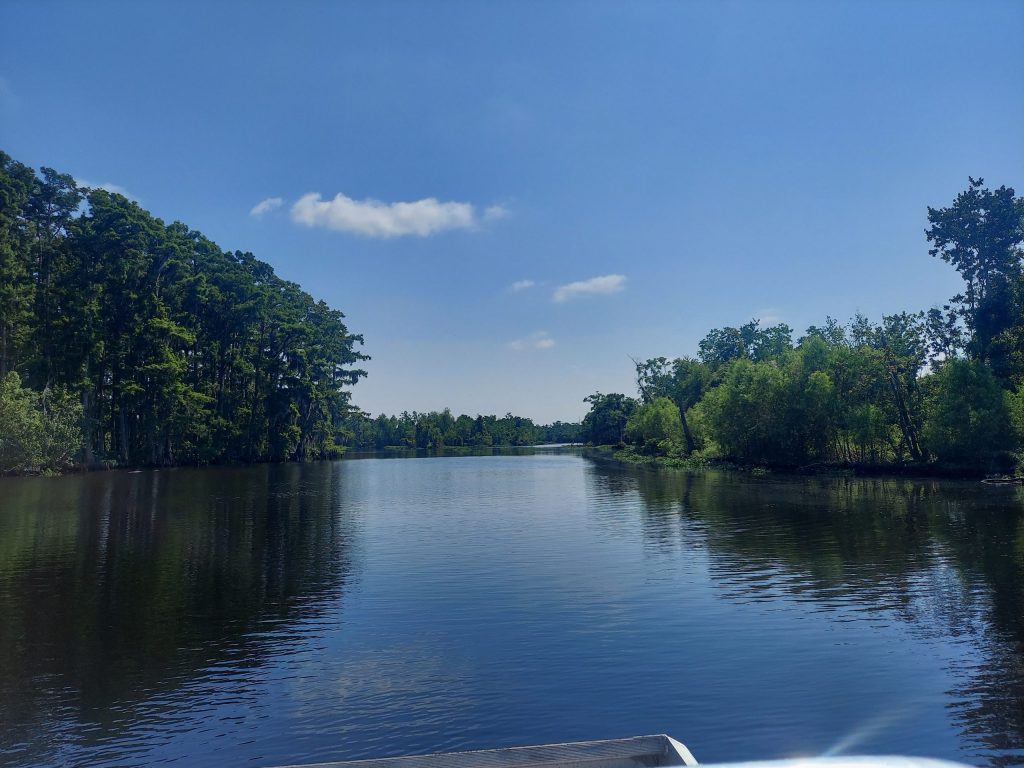
Louisiana swamps are among the most iconic and fascinating natural landscapes in the world. With their murky waters, dense vegetation, and rich biodiversity, these wetlands are more than just a habitat for wildlife—they’re an integral part of the state’s culture, history, and ecology. Visitors from across the globe are drawn to the mysterious beauty of Louisiana’s swamps, eager to experience the environment that has inspired countless stories, legends, and traditions. A Unique Ecosystem At the heart of what makes Louisiana swamps unique is their ecosystem. These wetlands are a mixture of freshwater, brackish water, and marshlands, creating a dynamic environment where wildlife thrives. Home to alligators, snakes, and a wide range of birds, the Louisiana swamps support a rich variety of species that rely on this habitat for food and shelter. The cypress trees, with their distinctive “knees” rising out of the water, create a hauntingly beautiful backdrop, and the Spanish moss that drapes from the branches adds to the swamps’ eerie charm. This environment is not only unique to Louisiana but also a critical part of the state’s natural resources, serving as a buffer against hurricanes and flooding. A Vital Part of Louisiana’s Culture The Louisiana swamps are not just about nature; they are deeply embedded in the culture of the region. For centuries, these wetlands have provided food, shelter, and livelihoods for the people of Louisiana. Fishing, hunting, and trapping have long been traditions passed down through generations. Crawfish, shrimp, and catfish, all sourced from the swamps, play a major role in Louisiana’s world-renowned cuisine. Swamp tours, popular with visitors, offer a glimpse into this lifestyle. Guided by locals, these tours provide an opportunity to see the beauty of the Louisiana swamps while hearing stories about the people who live off the land, sharing knowledge passed down from their ancestors. Home to Legends and Mysticism The mystique of Louisiana swamps is woven into the legends and folklore of the region. Stories of mythical creatures like the Rougarou—a werewolf-like beast said to roam the swamps—have been passed down through generations. Voodoo traditions also hold the swamps as a sacred place, where the boundary between the living and the dead is thin, adding an element of spiritual significance to these mysterious wetlands. The swamps have inspired everything from ghost stories to Hollywood films, adding to the allure of what makes Louisiana swamps so unique. Their connection to both history and the supernatural keeps them shrouded in mystery, drawing those curious about the unseen forces said to inhabit the region. Biodiversity Found Nowhere Else Another factor that makes Louisiana swamps unique is their biodiversity. While other wetlands exist around the world, Louisiana’s swamps are known for their rare combination of plant and animal life. From the American alligator to the endangered Louisiana black bear, the variety of species that call these swamps home is extraordinary. In addition to wildlife, the swamps are teeming with plant life. Cypress and Tupelo trees dominate the landscape, while underwater, the swamps host a variety of fish and crustaceans. Every inch of the Louisiana swamps serves a purpose in maintaining this delicate balance, making them a vital part of the state’s ecological health. A Natural Barrier Against Hurricanes What many people don’t realize is that the Louisiana swamps play a crucial role in protecting the state from the impacts of hurricanes. These wetlands act as a natural barrier, absorbing storm surges and helping to reduce flooding during storms. The dense vegetation and complex water systems slow down the force of hurricanes, providing a shield for inland communities. As climate change continues to threaten coastal areas, the preservation of Louisiana’s swamps becomes even more important. Efforts to restore and protect these wetlands are vital not only for maintaining their unique ecosystem but also for safeguarding the people who depend on them. Discovering the Swamps for Yourself Whether you’re an adventurer looking to explore by boat, a wildlife enthusiast eager to catch a glimpse of rare species, or someone drawn by the legends and lore of the region, the Louisiana swamps offer something for everyone. These wetlands are an integral part of the state’s identity, providing both beauty and practicality. They are a living reminder of the delicate balance between humans and nature. If you ever find yourself in Louisiana, a swamp tour is a must. It’s the best way to experience firsthand what makes Louisiana swamps unique, from their eerie beauty to their critical role in the ecosystem. You’ll leave with a deeper understanding of the history, culture, and environmental significance of these mysterious and captivating wetlands.
Spooky Season in New Orleans: Experience the Magic and Mystery

Spooky season in New Orleans is a time unlike any other. The city transforms into a supernatural playground, filled with rich traditions, haunted history, and vibrant celebrations. With its deep-rooted connection to mysticism and the paranormal, New Orleans offers an unforgettable Halloween experience. From ghost tours to festive parades, this city delivers thrill and enchantment at every corner. The History Behind New Orleans’ Spooky Season New Orleans’ unique history sets the stage for its iconic spooky season. Founded in 1718, this historic city has seen centuries of mystical practices, from Voodoo to Catholic All Saints Day rituals. Its storied past, paired with legends of ghosts and spirits roaming the streets, makes it the ultimate destination for paranormal enthusiasts. Visitors are drawn by the tales of haunted plantations, eerie cemeteries, and legends of famous witches like Marie Laveau. It’s no wonder spooky season in New Orleans captures the imagination of travelers and locals alike. Ghost Tours That Chill to the Bone During spooky season, one of the top things to do in New Orleans is embark on a ghost tour. These spine-tingling tours take you through the haunted parts of the city, from the French Quarter to the Garden District. With guides sharing tales of unsolved mysteries, tragic deaths, and the spirits left behind, you’ll feel the eerie energy in every step. Some popular spots include the LaLaurie Mansion, known for its grim history, and St. Louis Cemetery No. 1, where visitors flock to the tomb of the legendary Voodoo queen, Marie Laveau. If you’re a fan of supernatural stories, spooky season in New Orleans has enough chills to keep you up at night. Voodoo Traditions and Rituals You can’t talk about New Orleans’ spooky season without mentioning its connection to Voodoo. While often misunderstood, Voodoo has been a vital part of the city’s culture for centuries. During this time of year, various shops and temples offer insight into Voodoo practices, and visitors can even partake in authentic rituals led by local practitioners. From visiting the Voodoo Museum to stopping by Marie Laveau’s House of Voodoo, the spooky season offers a deeper understanding of this misunderstood tradition. Whether you’re simply curious or looking to learn more, Voodoo is a fascinating and integral part of the spooky season in New Orleans experience. Haunted Houses and Halloween Parades The spooky season wouldn’t be complete without haunted houses and Halloween parades. New Orleans is home to some of the most elaborate haunted attractions in the country. From spooky hayrides to interactive haunted mansions, these attractions are designed to terrify. But it’s not all about fear—New Orleans loves a good parade. During the spooky season, the Krewe of Boo Halloween Parade takes over the streets, delivering larger-than-life floats, masked performers, and a festive atmosphere. This event perfectly captures the city’s lively spirit and love for celebration, making spooky season in New Orleans unforgettable for families and thrill-seekers alike. Local Legends and Famous Hauntings The spooky season in New Orleans wouldn’t be complete without its infamous legends and famous hauntings. From the ghostly pirates of Barataria Bay to the vampires that supposedly stalk the French Quarter, the city’s folklore is alive with tales of the supernatural. Many people visit during this time of year to explore famous haunted spots like the Old Ursuline Convent or the Sultan’s Palace, both rumored to be inhabited by restless spirits. Each legend has its own special place in the city’s eerie past, making New Orleans a city where history and hauntings go hand in hand. Experience Spooky Season in New Orleans Whether you’re seeking paranormal encounters, eager to learn about Voodoo, or simply want to enjoy the Halloween festivities, there’s something for everyone during the spooky season in New Orleans. The combination of haunted history, lively parades, and spine-chilling ghost tours makes this city a must-visit during the fall months. Plan your trip during October, and immerse yourself in a Halloween adventure you won’t soon forget.
Is a Bayou a Swamp?
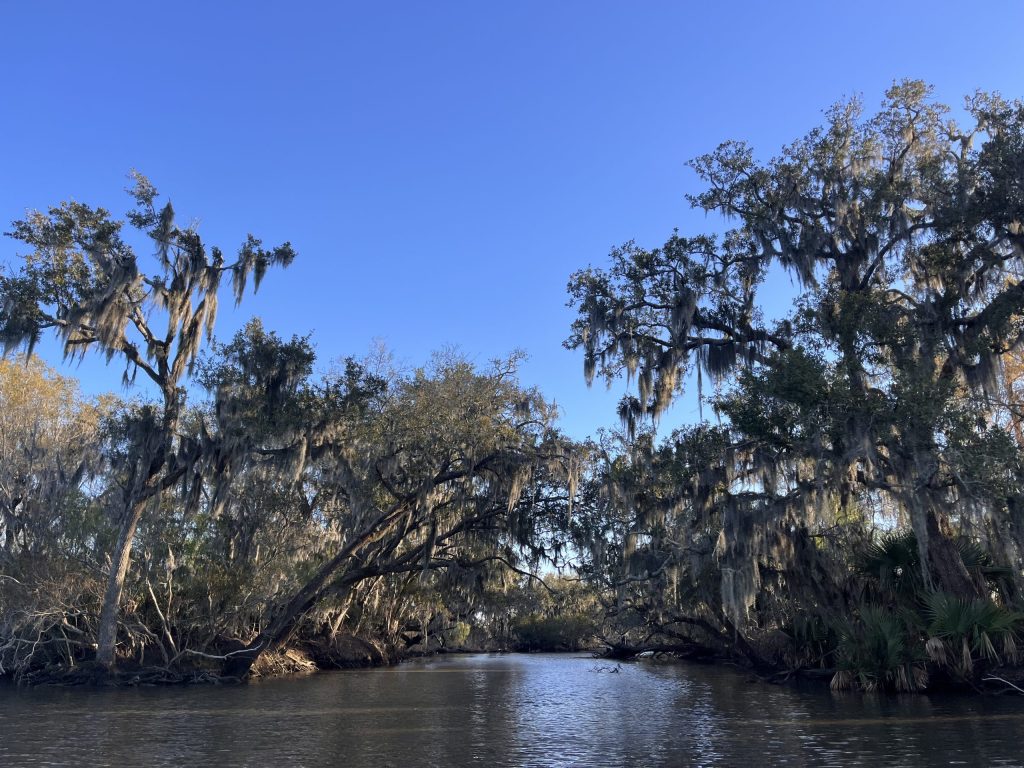
Is a Bayou a Swamp?
